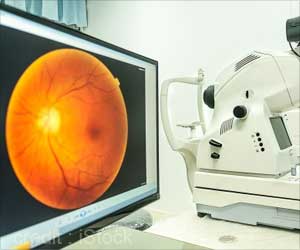In a novel approach, researchers collaborated with patients to design and implement the trial.
A new approach to managing moderate-to-severe asthma has gained interest and attention and has led to updated guidelines for patients, but studies to date have not focused on populations that face a disproportionate burden of complications from asthma: African American/Black (AA/B) and Hispanic/Latinx (H/L) populations.
AA/B and H/L individuals experience higher rates of asthma-related emergency department visits, higher rates of hospitalizations, and approximately double the asthma mortality rate compared to white individuals. Interventions to try to reduce this disparity have been labor-intensive and have had varied results.
In the real-world PREPARE (PeRson EmPowered Asthma RElief) trial, AA/B and H/L patients with asthma received one-time instruction to use inhaled corticosteroids (ICS) when they used an asthma reliever or nebulizer in addition to whatever medications they were taking for asthma.
The investigators and their collaborators demonstrated that this new intervention decreased the risk of severe asthma exacerbations by 15 percent (0.13 exacerbations per patient per year) and reduced asthma symptoms and days of impairment in AA/B and H/L patients with moderate-to-severe asthma.
The 0.13 exacerbation reduction was equivalent to the reductions seen in previous studies that led the National Heart Lung and Blood Institute to update recommendations for patients with moderate-to-severe asthma.
“Despite a focus on interventions, a disproportionate burden of asthma on underserved populations in the U.S. persists,” said the study leader Elliot Israel, MD, the Gloria M. and Anthony C. Simboli distinguished chair in asthma research and director of clinical research in the Brigham’s Pulmonary and Critical Care Division. “Results of the PREPARE trial show us that we can help reduce the impact of asthma through the simple, patient-centered intervention of having patients use ICS whenever they use their rescue inhaler or nebulizer to treat symptoms. This intervention is effective easy to implement, easy to use, and comes at a low cost.”
Previous studies of a strategy known as SMART have indicated that, in patients with moderate-to-severe asthma, using combination ICS with formoterol (a long-acting reliever) (ICS/formoterol) twice a day and when symptoms arise could help patients control asthma symptoms better than if they were instructed to only use ICS/formoterol twice daily.
Nearly all these studies were not real-world studies and did not take into account that most patients do not use their medications twice a day; a large proportion of patients with moderate-to-severe asthma use nebulizers (the studies excluded patients who used these) and the studies only included a narrow band of people with asthma (they excluded people who smoked or had other diseases and only included people who met specific breathing test criteria).
Most importantly, they did not include many Black or Latinx patients. Further, implementation of those strategies requires changing asthma regimens and is only variably covered by insurance.
Israel and colleagues designed the PREPARE trial to determine if a patient- and provider-friendly approach that did not involve changing underlying medications taking an ICS whenever patients used their reliever canisters or nebulizers could help improve outcomes in the real world for populations who have been underrepresented in research but bear a disproportionate burden of disease.
One of the unique aspects of the PREPARE trial was the degree of engagement and involvement of patients in the trial’s design and implementation. Investigators collaborated with AA/B and H/L adults with asthma as well as asthma caregivers called Patient Partners who are among the NEJM paper’s co-authors.
“What’s unique about this study is that we’ve focused exclusively on patient populations that face significant disparities in asthma outcomes and included them in optimizing the study,” said Juan Carlos Cardet, MD, of University of South Florida and a co-investigator of the study.
“I believe patient collaboration contributed to the success of this study,” said Israel. “We need to think about interventions that place the patient at the center of care and design our trials in ways that are inclusive, especially of populations that bear a disproportionate burden of morbidity.”
PREPARE was a randomized, open-label, pragmatic study conducted from November 2017 to April 2021 at 19 sites in the continental US and Puerto Rico.
The study included 1,201 adults with moderate-to-severe asthma who were randomized to receive one-time instruction for using ICS as needed (an intervention known as Patient-Activated Reliever-Triggered ICS, or PARTICS) in addition to usual care (UC) or to continue their usual care (control). Participants were followed for 15 months.
There was only one study visit, and at that visit, participants received instructions, completed questionnaires, and watched a video appropriate to their arm of randomization. All materials were also available in Spanish.
More than 70 percent of participants reported at least one asthma exacerbation in the previous year and 67 percent reported using a nebulizer for quick-reliever treatment.
For participants in the PARTICS+UC group, the annualized rate of severe asthma exacerbations was 0.69 per patient; the rate was 0.82 for the control group.
Participants in the PARTICS+UC group also had improved scores for asthma control and symptoms compared to participants in the control group. Those in the PARTICS+UC group also missed fewer days of school/work/usual activities compared to the control group (13.4 versus 16.8 days).
The authors note that this was an open-label study and ICS was provided at no cost but the calculated total extra controller use was 1.1 canisters a year which was far less than the extra controller used in SMART studies. Women were over-represented in PREPARE, but women also account for two-thirds of adult patients with asthma.
“This intervention appears to be an easy-to-implement strategy that improves outcomes for AA/B and H/L patients,” said Israel. “The outcome was achieved after a single visit and appeared durable, potentially offering a cost-effective, patient-centered way to reduce severe asthma exacerbations.”
Source: Eurekalert



